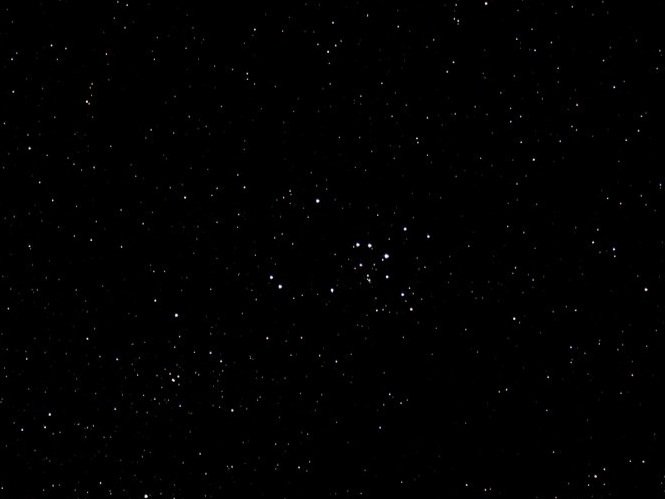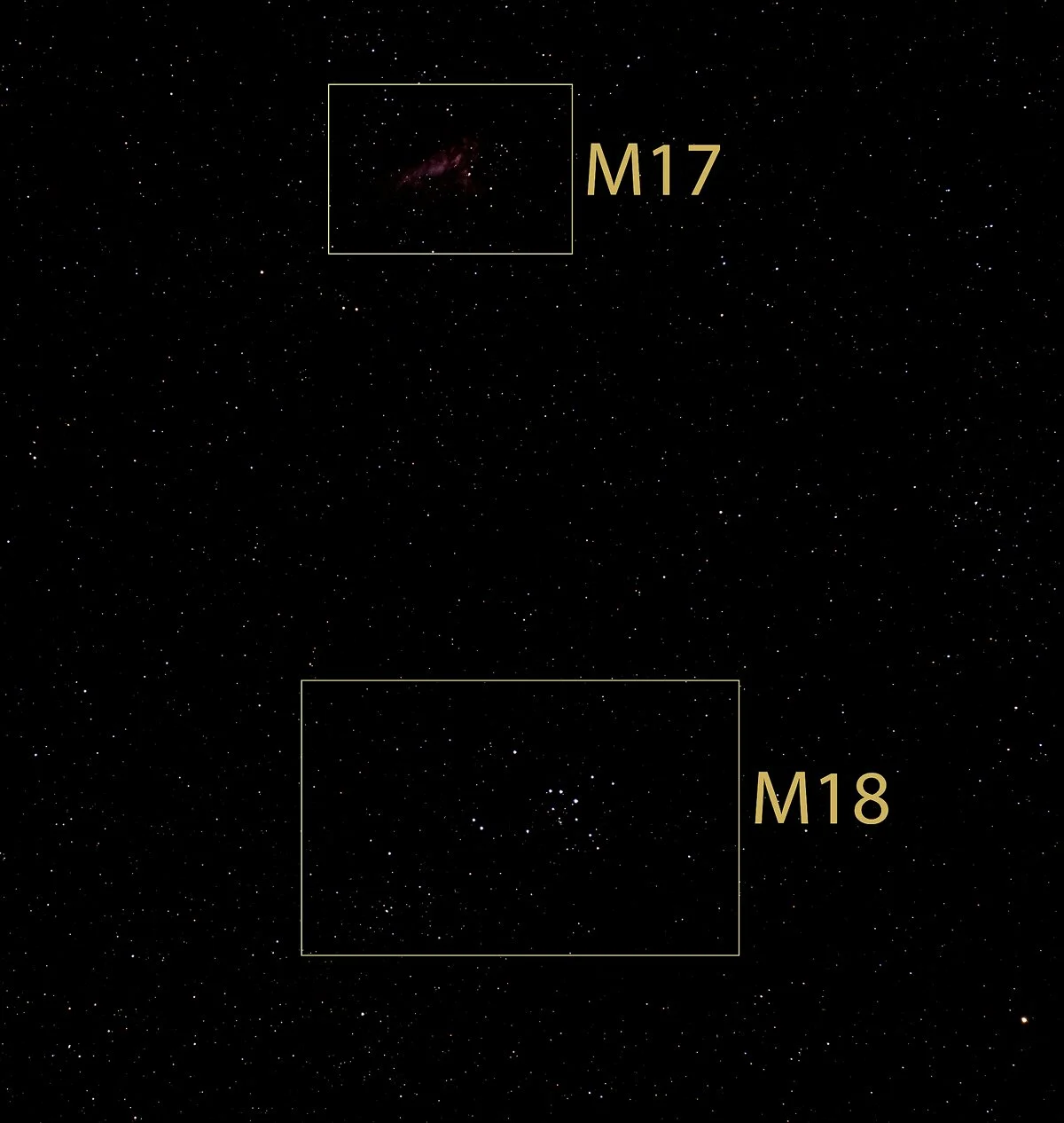M18 - Open Star Cluster
Type: Open Star Cluster
Discoverer: Messier, 1764
Size: 6 ly
Distance: 4220 ly
Constellation: Sagittarius
My Notes: On July 26, 2022, I captured M18 at Merritt Reservoir near Valentine, Nebraska. This is a very inconspicous star cluster. I had to write down its location in the frame in relation to M17 (see below) just to ensure I’d be able to find it when I edited the photos days later. This small star cluster is made up of about 40 stars on the near side of the Sagittarius spiral arm of our Milky Way.
(The following is the same for M8, M17, M18, M20, & M21) This was the first time using my iOptron CEM26 goto mount and my Fujinon 150-600mm lens. After struggling to capture the first 17 images of this collection using an iOptron Skyguider Pro, I picked up the CEM26. I was waiting hours trying to adjust the field of view using the Skyguider. While I made it work, it wasn’t really designed for deep-sky objects. As such, I could only get about one object each night because it took so long to find it, get it in view, and focus on it. Using this CEM26 let me capture five objects in the same amount of time. It is a real improvement to the practice and made for a much more enjoyable night, though I did miss the hunt that usually comes from trying to locate the objects myself, which I understand makes up a lot of the fun for people with Dobsonian telescopes. Regarding the lens, it also made a huge difference. The internal zoom and focus meant that the lens did not drift as gravity affected it. Focusing was much easier, and it stayed focused longer as the temperatures shifted.
Messier Notes: (June 3rd, 1764) ‘A cluster of small stars, a little below M17; surrounded by slight nebulosity. Easier to see than M16. Appears nebulous in 3.5 foot telescope: with a better telescope, the stars can be seen.’
Smyth: (Commenting on Messier’s description) ‘The means of that very zealous observer did not quadrate with his diligence.’ ‘A neat double star… in a long and straggling assemblage of stars. The whole vicinity is very rich and there are several splendid fields about a degree to the South.’
19 Frame Stack - Dark Median - 30 sec at f/10 600mm (918eq) ISO 6400 Fujifilm X-T4 XF150-600F5.6-8
M18 relative to M17


